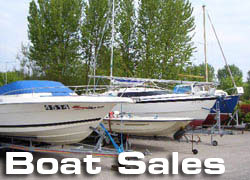There is no such thing as a boat that sells itself.
For a boat to stand the best chance of selling quickly and for a good price someone needs to put some time and effort to prepare it properly before the photos are taken, and before the boat is shown to potential buyers.
First impressions count – and you only get once chance for that…so before your boat is put on the market make sure you check the following 15 steps (or arrange to have someone do it for you)…
- Service all engines so that they start and run well. A recent invoice from a reputable marine engineer proving this has been done gives real confidence to buyers and can more than pay for itself in helping the sale along. If you do the servicing yourself make sure there is an invoice to show for the parts.
- Make sure the engine bay is as clean as possible with no leaks.
- ALL personal effects should be taken off the boat – only leave whatever is being sold with the boat.
- Ensure all loose items – bits that often get forgotten, lost or broken are present and correct – things like tables (and their legs etc), cushions, cover poles, instrument covers etc.
- Sails and canvas covers need to be present, clean and in good condition with any repairs needed done.
- Take off any scruffy bits of old rope and old fenders off – just leave good, clean and useful ropes and fenders – better yet include new ones – always a nice touch that does not cost too much and gives a real “feelgood factor” for a used boat.
- Check that all equipment listed in the inventory is present and working – and any user manuals are present.
- Check that the toilet is clean and odour free.
- Clean the outside of the boat thoroughly using the right products – paying special attention to non-slip deck surfaces.
- Clean and vacuum the cabin.
- Make sure the bilges are clean and dry
- Check that the hull bottom is clean and any antifouling is in good condition – a fresh coat of antifouling can work wonders!
- If there is a road trailer with the boat it is essential that it is thoroughly serviced and we strongly recommend getting this done professionally. Poorly maintained trailers can cause very bad accidents on the public roads, so an invoice proving your trailer has been serviced by an expert can give real peace of mind for both the seller and the buyer (and your broker!). Make sure there is a working light board and tie down ratchet straps included.
- Paperwork – make sure the boat’s documents are complete and ready for inspection by potential buyers. This includes; Builders certificate, bills of sale – proof of clear title, evidence of VAT paid, proof of CE / RCD conformity (if applicable) and, if applicable, any registration documents and mortgage statement. Also make sure any maintenance history documents/invoices are available.
- Price the boat realistically – All too often we see boats priced unrealistically high and they linger on the market for months (often longer) where they just blend into the background. We have found it is far better to price a boat realistically at the start rather than put a high asking price with “room for negotiation”. Consider factors such as the boat’s age, specification, condition and compare with other similar boats on the market – and factor in location. Also, since the recent financial crisis of around 2008 values of many used boats have reduced. Sometimes we see boats where the owner has underestimated the value of their boats and it sells for too little – especially if the boat has real particular strengths that may be relatively rare in our area.

